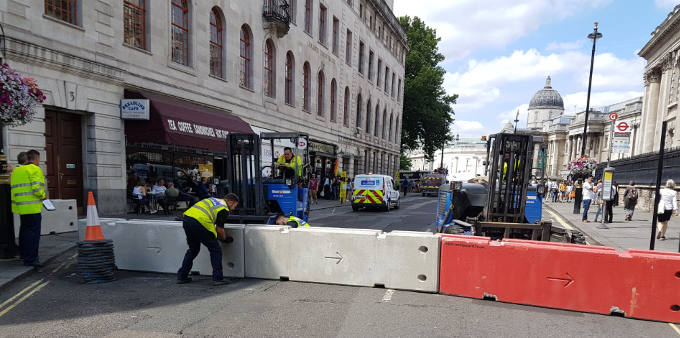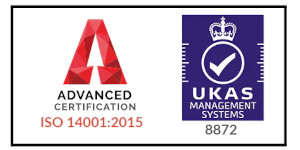Temporary roadworks: legislation, barriers, and best practice

When it comes to any kind of public safety, it is important to get it right and work within the framework of legislation. This is especially true whenever you are looking at a public safety situation that involves vehicles and road traffic. The dangers associated with moving vehicles in proximity to workers and other pedestrians means that when it comes to anything involving temporary roadworks, you must go by the book.
Guidelines and rules here are governed by the New Roads and Steet Works Act, which was originally issued in 1991, and was then updated with a new Code of Practice in 2014. If you are involved in any kind of roadworks, it is important to follow the practice set down here closely. Of course, it is true that moving from theory to practice can be difficult.
To make things as easy as possible, we have prepared this blog on safety guidance and understanding how to implement the rules as you carry out roadworks.
Which legislation is relevant here?
As mentioned above, the main piece of legislation pertaining to road works is the New Roads and Steet Works Act – especially taking into account the changes in practice guidance issues in the Code of Practice update of 2014. However, there is other legislation that it is important to familiarise yourself with.
Any roadworks that have an impact on traffic need to use appropriate road signs and signals. For this, you should follow the rules of the Department of Transport’s Traffic Signs Manual – paying close attention to Chapter 8’s part 1 and part 2.
You have a duty of safety to both works at the site and the general public, whose footpaths and other safe passages may be affected by the roadworks.
Who is this legislation relevant to?
The legislation for roadwork safety is relevant to any organisation or individual that is involved with temporary road works. This includes any time where off-street works could impact public road safety. These include:
- Highways and roads authorities
- Private companies
- Utility companies
- Road work supervisors and managers
- Anyone involved in organising and planning roadworks
- Staff and workers
Best practice for temporary roadworks
When it comes to carrying out temporary roadworks, it is important to break down the details of best practice into two specific categories: preparation and operation. You can consider preparation to be any of the work that is carried out before the actual roadworks begin. You can consider operation to be the actual running of the roadworks themselves.
Preparation best practice
Of course, it is vital to prepare properly for the work that you are going to carry out. Some key steps it is vital to take during preparation include:
- Follow local authority licensing procedures – understand issues around fees, deadlines, and notice requirements, as set out by your local authority.
- Work with a qualified overseer – it is important to work with and take the recommendations of a qualified overseer as you prepare, and during the works themselves. In this context, ‘qualified’ means anything with relevant professional experience such as a professional surveyor.
- Make plans available – you should provide detailed plans for you works and these should be provided to relevant authorities.
- Consider who will be affected – it is important to think about other companies and organisations that might be affected by the works that you are carrying out. For example, if you are working in the road, will the drains be covered and out of operation? This will have an impact on drains and sewers.
- Research the right tools – you need to understand the equipment and tools that you are going to need. For example, you will need appropriate safety barriers for the work and it is important to understand the details.
Operation best practice
Now you get down to the business of actually carrying out your road works. Once again it is vital get the specifics of your operating strategy right. Some of the important things to do include:
- Have appropriate signage in place – your signage needs to provide advance warning of any works and should provide clear information to anyone affected by them – it also needs to be completely clear and unobstructed. Any relevant speed restrictions should be highlighted, and of course, all signage must be regularly inspected.
- Use of safety barriers – any road works requires the use of appropriate safety barriers – and these barriers must be fit for the purpose they are intended. You should consider location when choosing barriers – for example, in areas with high winds, barriers should be weighed down with ballast.
- Put lighting in place – remember that lighting is crucial, even if works are not being carried out at night. Provide lighting that is appropriate in poor weather and bad conditions. And remember to maintain and check the lighting on a regular basis to ensure it is working.
At Maltaward, we have years of experience providing safety barriers to companies carrying out road works. If you are interested in learning more or hiring barriers from us, please don’t hesitate to contact us today or visit our barriers pages for more information.










